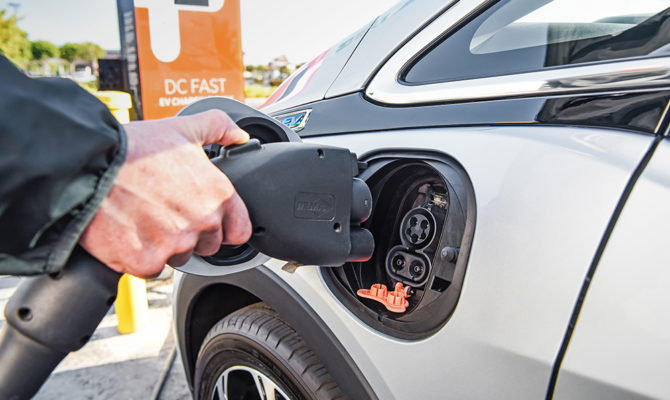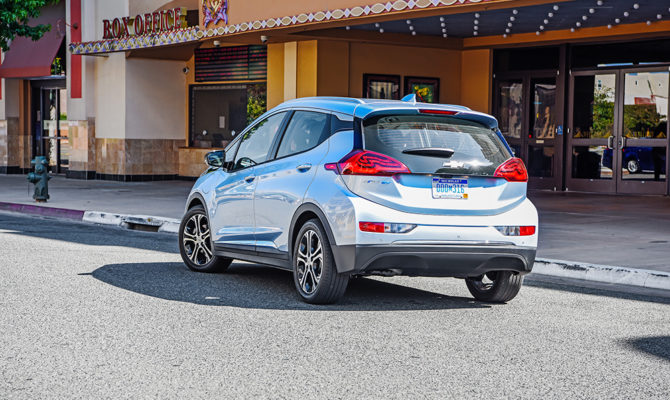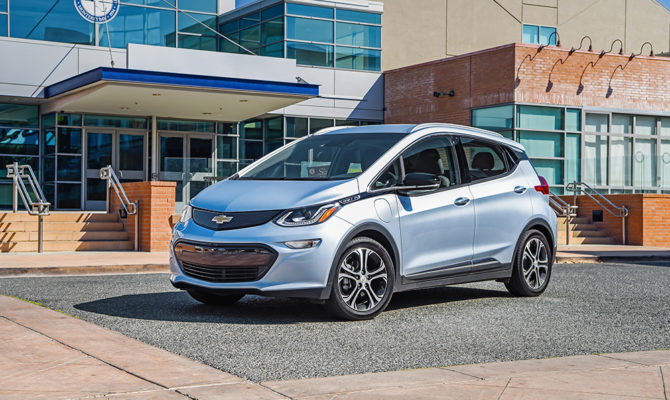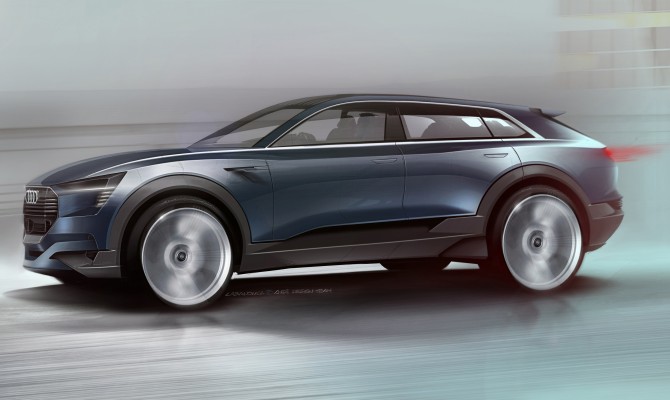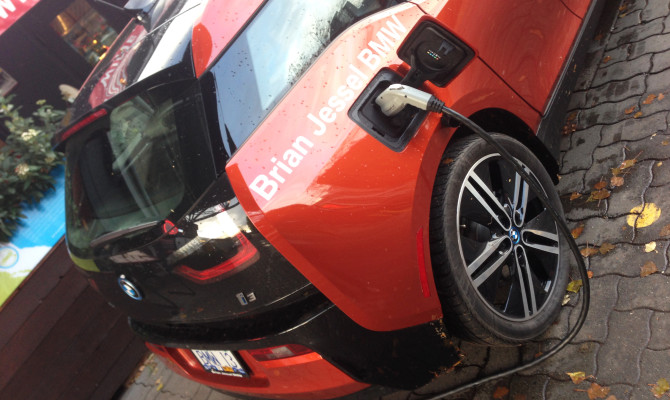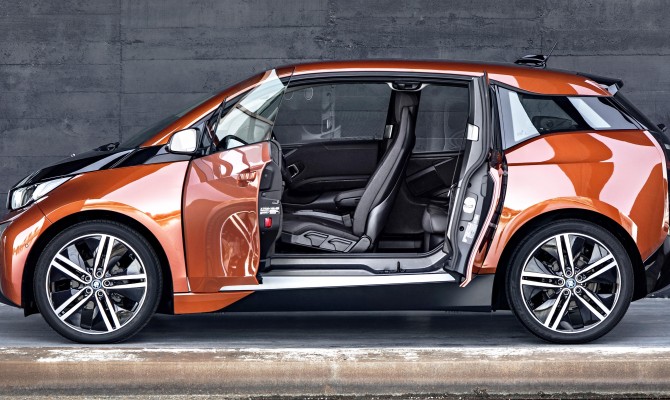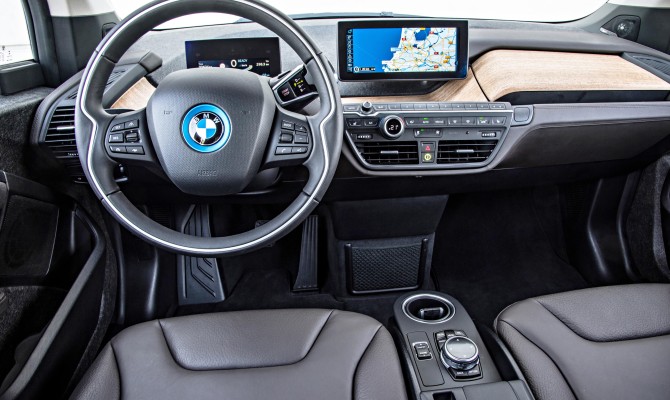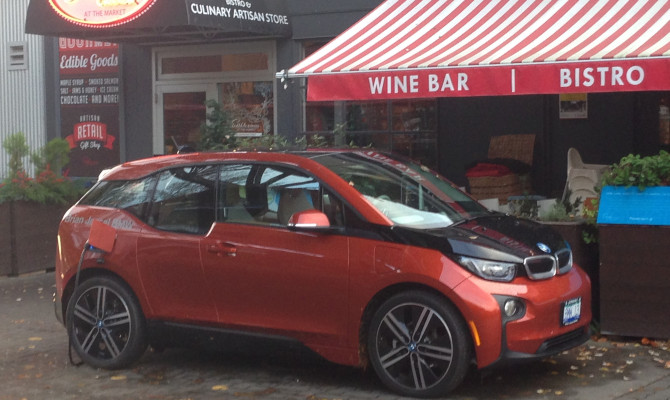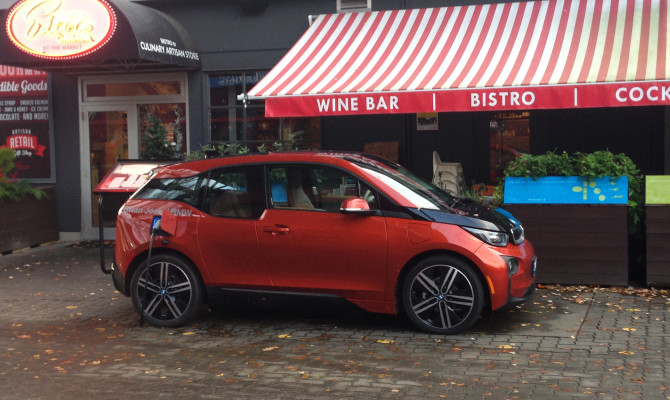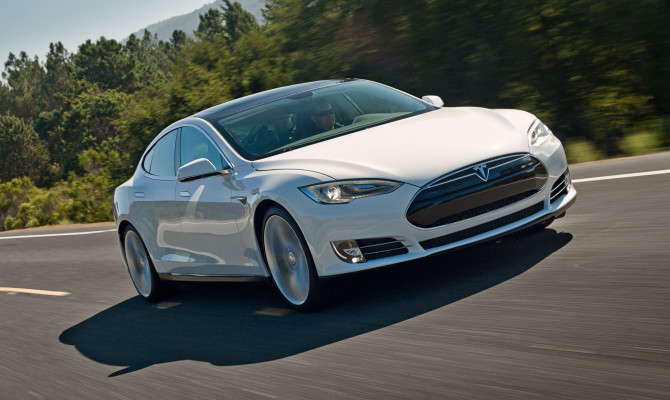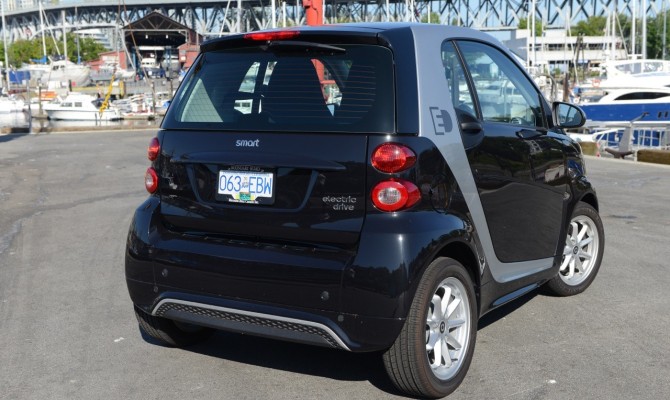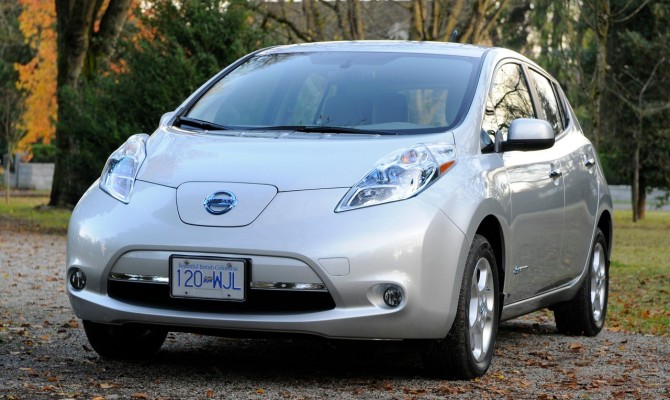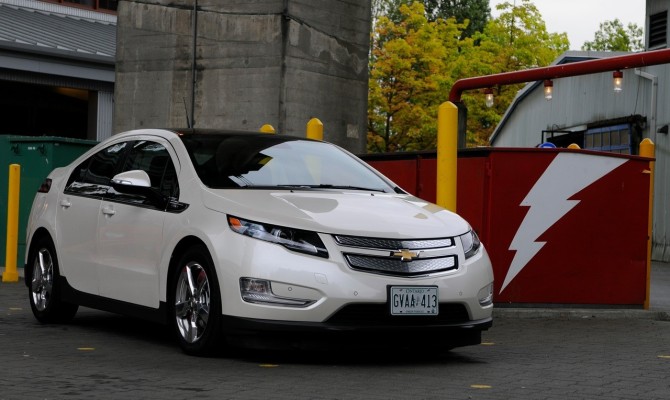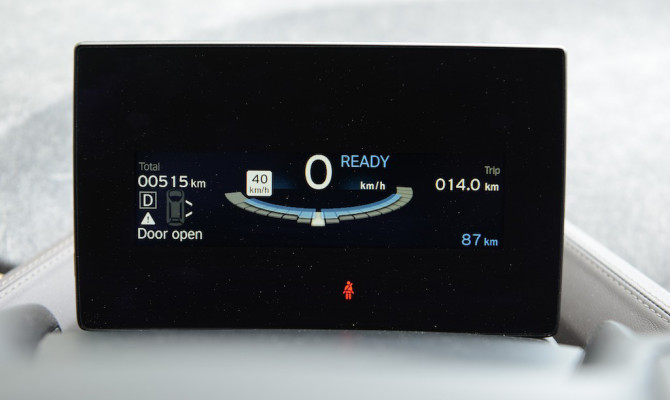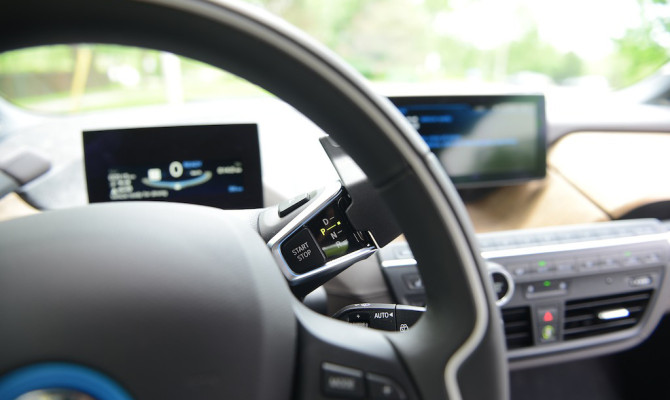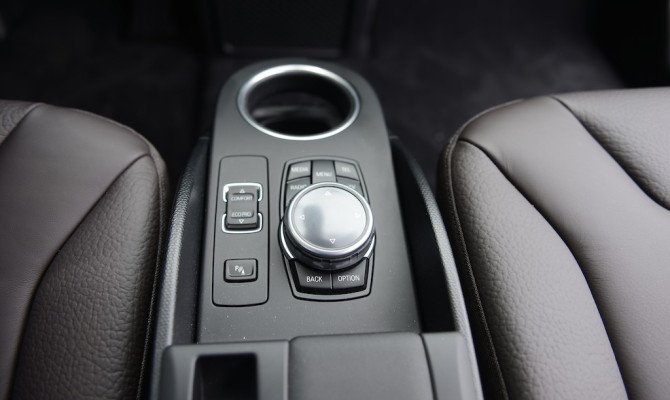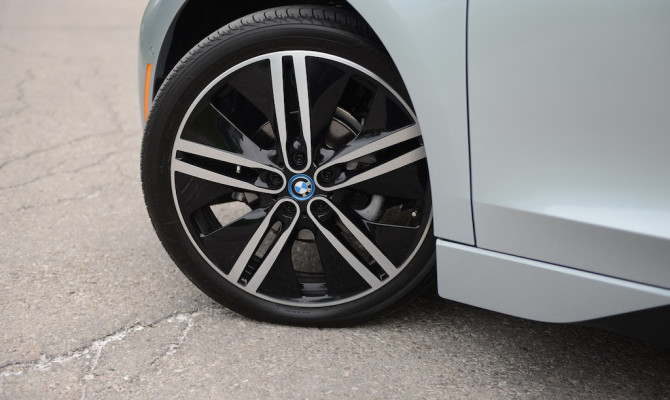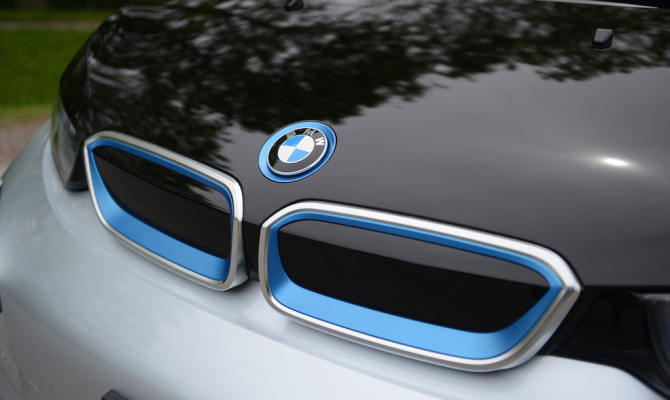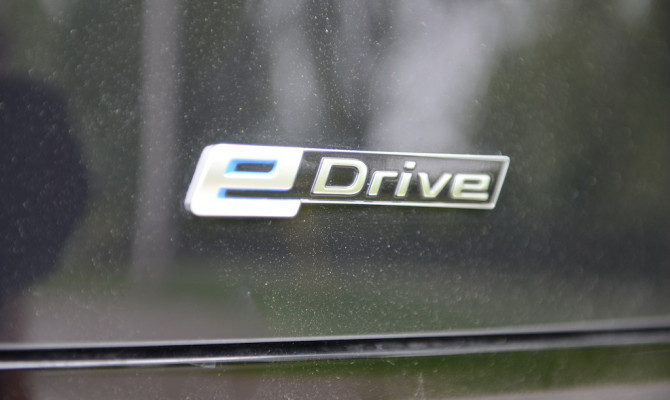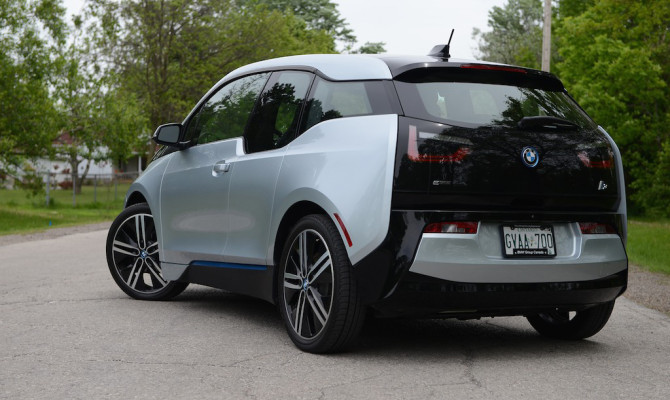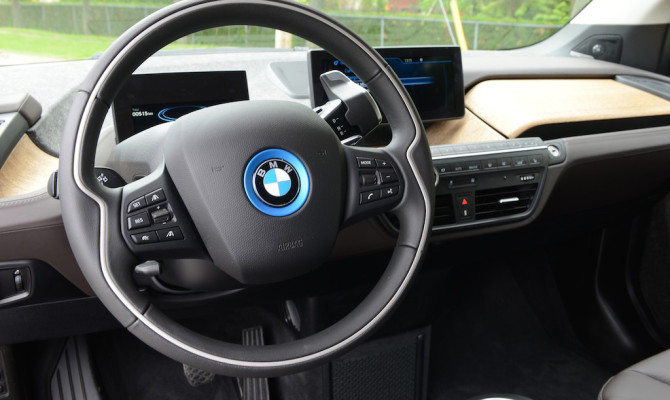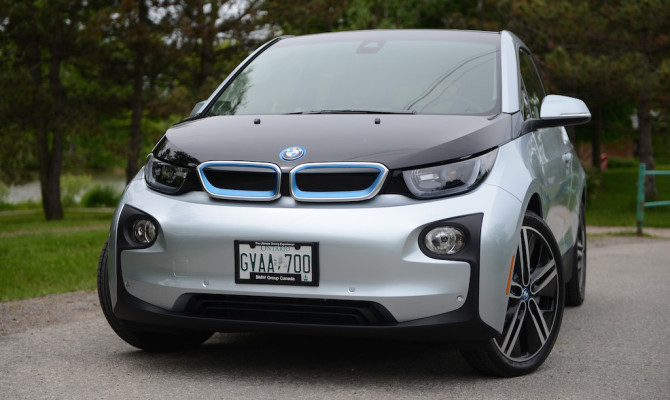New cash incentives for purchase now make it possible to buy all-electric vehicles for a discount of up to $11,000.
This means the popular Nissan Leaf and Ford Focus Electric can be bought for a sticker price well under $30,000 for those prepared to scrap their old bangers.

For the 2016 model year, LEAF adds a number of significant enhancements – beginning with a new 30 kWh battery for LEAF SV and LEAF SL models that delivers an EPA-estimated driving range of 107 miles* on a fully charged battery. The range of a LEAF S model is 84 miles, giving buyers a choice in affordability and range.
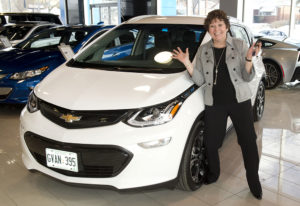
The game changer came when the BC SCRAP-IT Program announced it will offer an incentive of $6,000 for anybody who turns in their beater for scrap and purchases a qualifying new electric vehicle. That’s double the current incentive of $3,000, which now will be made available to buyers of used EVs.
This combines with the BC Government’s CEVfoBC program, which discounts EV purchases by $5,000.
“The goal of this incentive is to remove older high polluting vehicles from our roads in order to
lower exhaust pollutants across the province,” says Dennis Rogoza, BC SCRAP-IT Program CEO. “Ultimately, through programs like these, greenhouse gas emissions in our province will be dramatically reduced.”
SCRAP-IT’s voluntary early retirement vehicle program is designed to reduce greenhouse gas emissions and to reduce smog exhaust emissions across the province. All scrapped vehicles and their components are permanently and properly recycled. To date, the BC SCRAP-IT Program has removed more than 40,000 polluting vehicles across the province.
The technologically advanced new EVs offer huge fuel saving costs but few could be bought for less than $30,000 so it was hard for them to compete against miserly motors costing sometimes $10,000 or more less.
All three trim levels of the LEAF, which starts at $33,998 (before incentives), have an average range of 172 kilometres on a full charge. The Ford Focus Electric has the best price point at $31,998 and a range of around !20 km/h.
Last week, Chevrolet Canada began deliveries of the first Bolt EVs to Canadian customers. It has the heftier price tag of $42,795 but it’s EPA-estimated 383 kilometres of range on a full charge will tempt some to quit their expensive gas habit.
SCRAP-IT will also have a booth at the Vancouver International Auto Show,
March 28 – April 2 at the Vancouver Convention Centre. For more details about the BC SCRAP-IT program’s incentives and information, visit scrapit.ca.
I hear a new version of the electric VW Golf could have an astonishing range of 300 kms.
Chevrolet promised to offer the first affordable electric vehicle with up to 320 kilometres of range.
That promise will not only be met but also exceeded when the 2017 Bolt EV goes on sale later this year. With the vehicle’s US EPA-estimated range of 383 kilometres, owners can expect to go beyond their average daily driving needs — with plenty of range to spare — in the 2017 Bolt EV when charging regularly.
“Chevrolet showed the world the production version Bolt EV earlier this year and in a few short months we’ve moved from that vision to a reality,” said GM North America President Alan Batey. “The Bolt EV is a game changer for the electric car segment and it will start to become available at (US) Chevrolet dealerships later this year.”
Batey says Bolt EV buyers won’t be able to find a better value for an all-electric, thrill-inducing ride offering plenty of range, cargo space, technology and safety features that make the Bolt EV a great package for any driver.
“While range is important, we knew Bolt EV owners would want more — more space and more power — and the Bolt EV delivers,” said Bolt EV Chief Engineer Josh Tavel. “Our team took special pride in optimizing every aspect of this vehicle, especially its impressive range and ride dynamics.”
The manufacturer’s suggested retail price has been set at $42,795 plus a $1,600 destination freight charge. Pricing could be in the low 30s (plus the freight charge), after provincial incentives are applied to the purchase price.
“Value is a hallmark for Chevrolet and the pricing of the Bolt EV proves we’re serious about delivering the first affordable EV with plenty of range for our customers,” said Batey.
Bolt EV buyers will find range, cargo space, technology and safety features standard in a vehicle that has crossover proportions. The DC fast charging provision and the tire inflator kit are standard equipment.
The base LT trim starts at $42,795 and comes with standard features that include, among others, Regen on Demand™ steering wheel paddle, rear vision camera, 10.2” diagonal colour touch-screen and MICHELIN™ Self-sealing tires. The top trim Premier includes all LT equipment plus additional standard features such as leather-appointed seats, front and rear heated seats, surround camera and rear camera mirror. The Bolt EV will be arriving at Canadian dealerships in early 2017.
“Its typical SUV body and flat, coupe-like cabin give the Audi e-tron quattro concept a very dynamic appearance.”
Audi has released an artist’s impression of its e-tron quattro concept car, which will be unveiled
The sporty SUV is designed from the ground up and follows the Audi “Aerosthetics” concept, combining technical measures for reducing aerodynamic drag with creative design solutions. Movable aerodynamic elements at the front, on the sides and at the rear improve the air flow around the car. The aerodynamically optimized underbody is completely closed. With a cd value of 0.25, the car sets a new record in the SUV segment. This contributes considerably to the long range of more than 500 kilometres.
The study is based on the second-generation modular longitudinal platform, which provides considerable scope for the drive system and package. Its length is between that of the Audi Q5 and the Q7. Its typical SUV body and flat, coupe-like cabin give the Audi e-tron quattro concept a very dynamic appearance. The spacious interior offers room for four people.
The large lithium-ion battery is positioned between the axles and below the passenger compartment. This installation position provides for a low center of gravity and a balanced axle load distribution. And that gives the car better driving dynamics and driving safety than other vehicles in the segment.
Audi uses its experience with the electrically driven Audi R8 e-tron sports car for the drive system. Three electric motors – one on the front axle and two on the rear axle – drive the Audi e-tron quattro concept. And that makes it an electrified quattro, the e-tron quattro – efficient and dynamic at the same time.
Contact the writer at keith [dot] morgan [at] drivewaybc [dot] ca
“In town, the BMWi3 is the perfect shopping cart, extremely manoeuvrable and the fastest parker in town!”
It is suggested that imitation is the sincerest form of flattery though it’s doubtful that belief is enthusiastically shared by folks in the fiercely competitive auto business.
Nevertheless, to quote another common saying, all is fair in love and war. So, prepare to see clones or lookalikes of the all-electric, BMW i3 emerging from the production lines of major manufacturers in the next few years.
In Detroit recently, my head spun when I clapped eyes on Chevy’s all-electric Bolt, even its rusty colour was similar to the i3 I drove at the launch in Amsterdam in 2013. As I remarked at that time, the compact eco-Bimmer has a funky look and its one that’s gaining traction especially among the younger generation.
My head spun again the other week when I picked up a production version to test in local conditions from Brian Jessel BMW in Vancouver. It was identical to the Dutch example! Well, not quite. It did have an additional feature not present in the launch model. It had a range extender, which is marketing-speak for a two-cylinder, 647cc gas engine. It doesn’t drive the wheels but kicks in as an electricity generator designed to top up the battery when it runs low.
It’s a must addition for Canada unless your daily trek clocks up no more than the promised 130-160 kilometres range when setting out with a fully-charged battery or you don’t have access during the day to the charging stations now springing up in many urban core parking lots.
Based on my Dutch experience and a few days buzzing around the Fraser Valley, the top end is a shade optimistic, especially in poor weather when one tends to crank up the heat. Mind you, with a starting price just short of $45,000 the $4,000 generator pushes that already substantial cost up significantly. The nine-litre gas tank that feeds the tiny engine boosts the range to around 300 kilometres.
What is indisputable is just how much fun this car is to drive. In town, the BMWi3 is the perfect shopping cart, extremely manoeuvrable and the fastest parker in town! The lithium-ion battery, housed in an aluminum cage below the five-seater cabin, enables the electric motor to mimic a race car at the green and back into a tight spot equally quickly!
You think I jest? After seven seconds of acceleration, the display shows 100 km/h. The need to pass fast on the freeway is also easily achievable with a five-second count between 80 and 120 km/h.
Drive like that all day and the gas engine will be firing up in no time but the power is there if you need it. Drive sensibly and to the prevailing weather conditions and you will get close to the advertised range. Sticking to the sluggish EcoPro and EcoPro+ modes will add 20 and 40 km to the range. Nah.
But it’s not just about operator proficiency: The carbon-fibre body is light and regenerative braking constantly tops up the cells. Using a regular domestic power point, I was able to recharge the i3 overnight and if you install a fast charger, you can be back on the road in three hours.
Interestingly, the BMW Group has partnered with the live transit information service Moovit (IOS and Android apps available). The app is an interactive service that informs the user about local transit options once you have parked up and plugged in the i3. Crowd sourced information also tells you which forms of transport are full and where there are delays. You can take advantage of this fabulous app without the need to shell out for an i3!
Electric car buyers need to know if they can live with the limits of the electric cars’ range or if they want the flexibility to extend the range with an on-board generator…
This story could be obsolete in a month as automakers add electrification to existing models and introduce all new models, at an incredible rate.
The market for electric cars or plug-in hybrids is very small but it’s growing. The success of Tesla’s Model S has shot its stock price into the stratosphere, as investors bet on that company’s emergence as the electric car and technology leader. The stock price should really reflect the cars sold, as Tesla can only make about 20,000-25,000 cars annually for a worldwide market.
The Market
Green Car Report recently published a sales report on all electrics sold in Canada for the first six months of the year. The list of vehicles sold is compiled from companies’ self-reporting but Ford’s data is missing. This Green Car Report estimates that Ford’s numbers will push overall electric sales to 2,200 for the first half of the year, a 50 per cent improvement over a year ago. What we do get is a good snapshot of the market. With only 1,941 electrics officially counted, amounts to only 0.21 per cent of the overall Canadian marketplace. (Canadians are on track to buy almost 1.7 million vehicles this year.) So these are tiny but important numbers and the trend is higher. The clear winner isn’t the Tesla at all; in fact it is in third place behind the Chevy Volt and Nissan LEAF. Chevy sold 831 Volts up to July with Nissan selling 462 LEAFs and Tesla moving 290 Model S cars. The Smart Full Electric Drive comes in fourth with 163 cars sold and in its first month of sales (June) the BMW i3 looks good with 50 units sold.
Not all electric cars are the same
What many people don’t realize is the complexity of the electric car market. I look at it this way, if the car can be plugged into an outlet; it is at least partially electrified. There are pure electric cars like the Nissan LEAF, Tesla Model S, Smart Electric, Mitsubishi i-MiEV and BMW’s new i3 – all of these use just electricity to propel the car. Then there are electric cars that have an onboard generator, should the range of the electric pack limit driver’s intentions. The Chevy Volt, Cadillac ELR, the Toyota Prius Plug-In and the BMW i3 are, or can be equipped, with a gasoline engine to either drive the wheels or charge the battery. This is one area where the Chevy Volt wins. With roughly a 65 km range on pure electricity and a small generator on board to extend the range indefinitely, this car makes a lot of sense. This is why the BMW i3 has an optional generator for $3,000 to extend the range of that model. But if the buyer chooses this option, the range of pure electric drive is limited because of the added weight of the car. Electric car buyers need to know if they can live with the limits of the electric cars range or want the flexibility to extend the range with an on-board generator.
What is still to come?
We are living in interesting times.
More and more electric cars are being added, not to meet the demand but to meet regulatory requirements. For the model year 2016, the United States has a new cooperate average fuel economy (CAFE) standard that has each manufacturer trying to hit 35.5 mpg average across their fleet, including small trucks. This isn’t doable with the current internal combustion engine technology, so these manufacturers are looking to electrification as the answer. Even though more and more electric versions will arrive, don’t expect them to sell. In fact, most car companies don’t expect them to sell at all; they just want the mpg credit towards the new regulations. This might sound cynical but watch how many electric cars will arrive, especially for the 2016 model year, and how many you will actually see on the road. Most are built at a loss, to offset thirstier, gas-loving machines.
Verdict
Even though electric car sales are very small and many new models will go unnoticed, the trend to electrification is here. With markets like China mandating a percentage of electric cars to offset its horrific pollution, will help move the numbers of electric vehicles worldwide. This, along with steady adoption rates here in North America will help promote better charging infrastructure. Another factor is the price to own an electric car. The Smart Electric is priced at $27,000 making it the least expensive full electric car. With Nissan hacking its price on the LEAF to just over $31,000 and the Volt starting at roughly $35,000, these cars are more affordable than ever. I think the BMW i3 is very attractive for $45,000 because it is a luxury brand at an attainable price. The real showstopper will be the Tesla Model III that they hope to sell for US$35,000 with more than 400km of electric range when it is introduced in 2017.
Even though Tesla has the sex appeal going right now, don’t count out the other mainstream manufacturers with decades, if not centuries of auto making knowhow, to take on the challenge.
‘Range anxiety’ is a major mental obstacle for those with the resources to contemplate the purchase of an all-electric car…
The future of cars may be electric… but don’t expect 2014 to be the dawn of the new age.
In fact, I predict there’s a long road ahead for manufacturers trying to woo the driving public into buying a car with a chord attached.
Throw in the sales numbers for all-electric cars, plug-in hybrids and gas-battery hybrids and they don’t come anywhere near five percent of total vehicle sales. The commercial conundrum is that these (more) eco-friendly vehicles come with a premium sticker price beyond most folks and the only way to bring them in range is to sell many more!
Most provincial governments have incentive rebates for those that make a green choice. While successful to a degree, they alone are going to turn us all on.
If gas prices soar then some more buyers will go the hybrid route but that said there are an awful lot of four-cylinder vehicles out there that are remarkably economical on gas. Let’s get our heads out of the dark clouds and accept that economy of purchase and operation are what drives most sales.
I am not an electric car naysayer, far from it, but we have to recognize that much needs to happen before the majority buy into this future. Sticker price is one thing but the single biggest challenge has to be the slow pace of infrastructure to fast-charge cars, whose batteries have run down mid-journey.
‘Range anxiety’ is a major mental obstacle for those with the resources to contemplate the purchase of an all-electric car such as the Nissan Leaf or Mitsubishi iMIEV. For that reason, it seems likely that the likes of the Chevrolet VOLT will enjoy more sales success as a main means of transport because an onboard gas-powered generator is ready to kick in to recharge the battery when the juice runs out. Similarly, the new BMWi3 while available as a pure electric vehicle can also be purchased with a range extending engine.
Other manufacturers are set to follow that same route but in the meantime, the plug-in hybrid, which combines the pulling power of a gas engine and electric motor is the early winner of people’s green-tinged hearts.
But back to the thorny issue of infrastructure. Many advocates want government to play a lead role but with all the demands made on the public pure that’s a dead end street. Maybe the tax incentives they can offer will encourage the private sector.
For instance, the Canadian company Sun Country Highway has announced plans for a charging station network along the length of the Trans-Canada Highway. Other companies operating alongside major highways are extracting planning concessions from local government by installing recharging points.
Hats off to BMW and its holistic approach. The German giant is collaborating with small tech companies, who will work with customers to make sure their homes don’t require a major power refit just to own one of the new i3s.
And, as Dr. Ian Robertson, a BMW management board member, told me at the LA Auto Show recently there are many other power opportunities right in front our eyes. Urban areas are awash with street lights, which could be used as a source for curbside recharging.
He also pointed out that there are many discontinued public phone sites in today’s cities. They have power wired to them and are ready to be tapped, should the phone company want to make a profit of more than a quarter per call.
Recent Comments
- { Enjoyed your Forest of Bowland in the BMW X5M, particularly the photo of the BMW in front of the main part of Stonyhurst College where... }
- { Bantam designed the Jeep, not Willy's or Ford. The American military gave the original Bantam prototype to Willys and Ford to copy. There is plenty... }
- { All Escalades come with a 6.2-lilter V8 engine that produces 420 horsepower. A six-speed automatic is the only transmission offered and drives the rear wheels.... }
- { Alexandra is an excellent journalist. }
Popular Posts
- Journey to a ‘Sparkling’ Luxury Okanagan Resort “Four lucky readers will put a Dodge Journey’s weekend-...
- The Need For Speed: Hike Those Highway Limits More than half of those polled believe the province sho...
- Drives-U-Crazy… Erratic drivers. An early morning drive from Kelowna to Vancouver is nor...
- Readers Respond: The Pros and Cons of Increasing B.C. Speed Limits Increasing the speed limits will only increase risk to...
- Honda CR-V Review: The Compact Crossover To Get Things Done The CRV is a very stylish and aerodynamic crossover veh...


